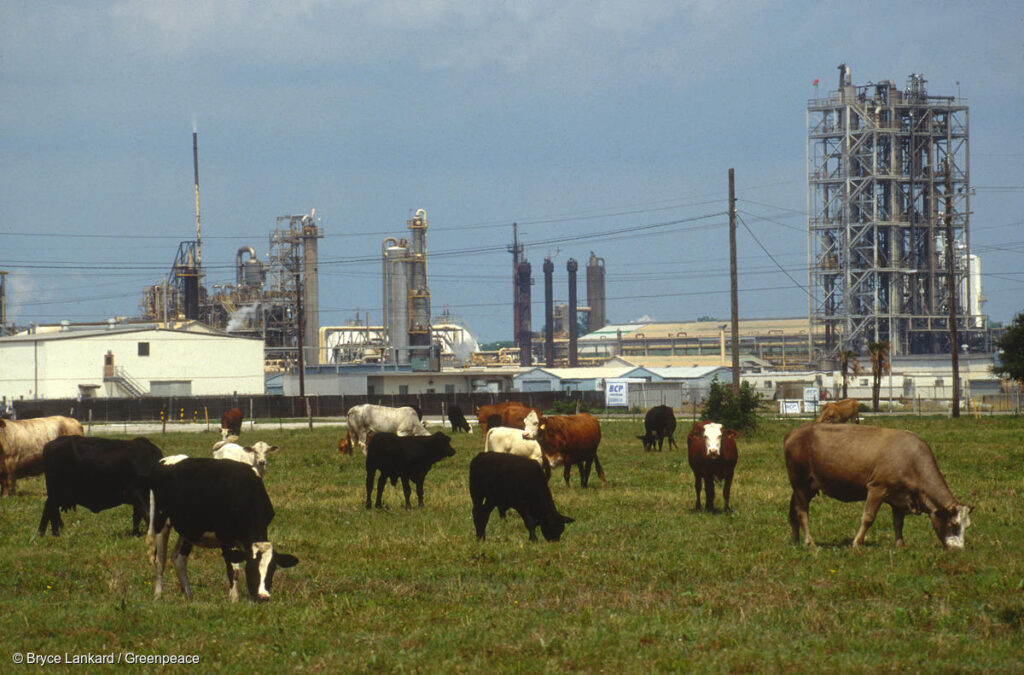Vinyl chloride and toxic waste
PVC Poison Plastic: An investigation following the Ohio train derailment of widespread vinyl chloride pollution caused by PVC production
Vinyl chloride production creates millions of pounds of toxic waste
- Vinyl chloride and PVC plastic plants sent more than 20 million pounds of chlorinated waste, as well as dioxins, to incinerators in Arkansas, Louisiana, and Texas in 2021.
- Westlake Chemical’s plants in Kentucky and Louisiana were the top two sources of dioxin sent to landfills and incinerators.
After the Ohio train derailment, communities nationwide sounded the alarm that contaminated soil and other wastes from the vinyl chloride fire would be burned or dumped in landfills in their communities.[9-12] Our research reveals that vinyl chloride and PVC plastic plants report sending more than 20 million pounds of chlorinated waste to incinerators in Arkansas, Louisiana, and Texas in 2021. Westlake Chemical’s plants in Kentucky and Louisiana were the top two sources of dioxin waste sent to landfills and incinerators. For more details, see the spreadsheet here which includes detailed information on chlorinated waste transfers sent from vinyl chloride and PVC plants to incinerators, landfills, and other disposal facilities.
Huge volumes of waste flow from vinyl chloride plants to incinerators east of Houston. The hazardous waste incinerator, Clean Harbors in Deer Park, Texas, burned more than four million pounds of chlorinated waste from vinyl chloride producers as far away as Kentucky in 2021.
Here’s why this matters. The incineration of chlorinated chemicals and materials can lead to the formation and release of dioxins[13-17] —a family of chemicals that are extremely persistent, bioaccumulative, and toxic. Dioxins are also released during accidental building and landfill fires involving PVC plastic.[18] Because dioxins are endocrine disruptors, they can be hazardous at incredibly low levels of exposure. Dioxins are carcinogens and cause other harmful effects on our reproductive, developmental, and immune systems. They can also lead to chloracne, a rare skin eruption.[19] Dioxins are of such great concern that they have been targeted for global phase-out under the international United Nations POPS treaty.[20] They are notorious for being the primary contaminant in Agent Orange and at other environmental tragedies like Love Canal and Times Beach.
The dangers of transporting vinyl chloride and chlorinated wastes

Communities impacted by the vinyl chloride/PVC supply chain include those along the transportation routes for its dangerous chemicals and toxic wastes. While chlorinated wastes from the production of vinyl chloride and PVC are sent to landfills, cement kilns, and incinerators in the south-central U.S., producers distribute vinyl chloride by rail and barge to PVC factories farther to the north and east. The transportation of vinyl chloride/PVC is inherently dangerous, as made clear when derailments occurred in East Palestine, Ohio and Paulsboro, New Jersey.
Explosions and fires at other vinyl chloride plants
East Palestine is not the only community that has been impacted by major fires and disasters associated with vinyl chloride and PVC production. A recent analysis by Material Research for Coming Clean found that since 2010, there have been at least 40 chemical incidents worldwide involving vinyl chloride and PVC. These have occurred at 29 facilities worldwide, including a dozen chemical factories in the U.S. Fires, leaks, and explosions killed at least 71 people and injured 637 people in the 40 incidents globally.
Read the report
- I.Introduction
- II.Not an isolated incident
- III.Largest vinyl chloride polluters
- IV.PVC plastic and environmental justice
- V.Interactive Map
- VI.Vinyl chloride and toxic waste
- VII.Safer Solutions
- VIII.Methodology
- IX.Credits and Creative Commons License
- X.References
